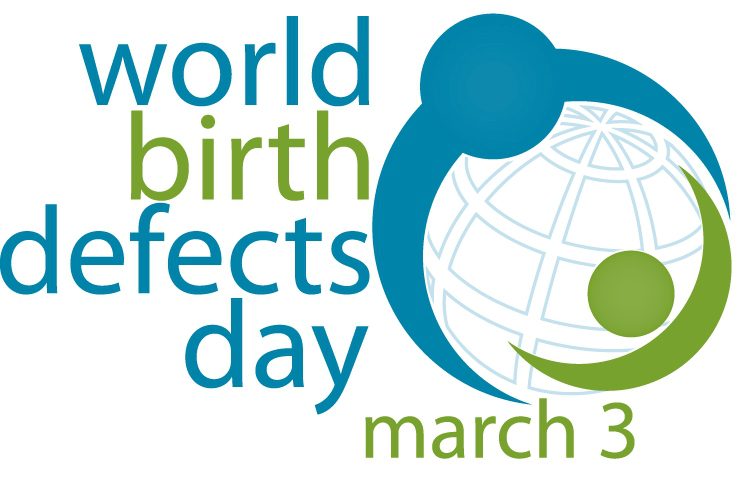CCHD Screening for Filipino Neonates
The Philippine Multicenter
Pulse Oximetry Screening (POS) for Critical Congenital Heart Disease (CCHD) was
part of this year’s National Newborn Screening Convention. Presenting the
preliminary results of the project in the plenary paved the way for the project
team to share their vision for having every Filipino baby screened for a
possible CCHD and for the affected newborns to undergo timely surgery or
catheter intervention.
Of the 16,183 newborns who
underwent CCHD screening so far, seven newborns were found to have various
critical congenital heart diseases, i.e., transposition of great arteries,
pulmonary valve atresia, and double outlet right ventricle. Non-CCHD cases were
also picked up by the project like persistent pulmonary hypertension, pneumonia
and sepsis.
The Project Team from the
Department of Pediatrics, UP College of Medicine, consists of Dr. Jose Jonas
Del Rosario (lead), Dr. Maria Melanie Liberty Alcausin and Dr. Carmencita Padilla.
The project aims to determine the utilization of POS in detecting neonates at
risk of having critical congenital heart diseases in the Philippines. The two-year
study aims to determine the prevalence of CCHD as confirmed by 2-D
echocardiography. The project currently has seven participating hospitals,
namely: Baguio General Hospital and Medical Center, Dr. Jose Fabella Memorial
Hospital, East Avenue Medical Center, Pasay City General Hospital, Philippine
General Hospital, Quirino Memorial Medical Center and Zamboanga City Medical
Center. The project is sponsored by the Newborn Screening Reference Center,
National Institutes of Health, UP Manila in cooperation with Annamarie Saarinen
from the US-based Newborn Foundation, who donated the Masimo pulse oximeters.
The first baby who was saved
by the project was born at the Quirino Memorial Medical Center. He was screened at the 25th hour of
life with oxygen saturation of 54 percent on the right hand and 63 percent on
the foot [Note: a normal baby must have readings of more than 94 percent]. A 2D
echocardiogram done at the 48th hour of life showed Transposition of Great
Arteries. The baby was transferred to the Philippine General Hospital where pediatric
cardiologist Dr. Del Rosario performed the lifesaving procedure, Balloon Atrial
Septostomy followed by Arterial Switch Operation within the baby’s first month
of life. The baby was discharged from the hospital one month after the
operation. The baby is doing well.
Critical Congenital Heart
Disease, by definition, requires surgery or catheter intervention in the first
year of life. Babies with CCHD look normal at birth but are at a significant
risk for disability or death if their condition is not diagnosed immediately.
Approximately 50 percent of infants who have CCHD are asymptomatic in the first
few days of life. Early recognition and accurate anatomic diagnosis are needed
to provide appropriate life-saving interventions and referral to a
well-equipped health-care
cardiac facility.
A pulse oximeter is, indeed, a
simple device that can detect the risk of having a critical congenital heart
disease. The project hopes to provide the evidence to support CCHD screening as
part of routine procedures for the newborns. The ultimate goal is its inclusion
in the Newborn Care Package.
Preventing blindness in children through early screening
In a study conducted by the
Philippine Eye Research Institute (PERI), retinopathy of prematurity (ROP) is
identified as the major cause of blindness among students enrolled in blind schools
in Metro Manila. Retinopathy of prematurity is a blinding condition affecting
premature newborns. It is recommended that newborns who meet the following criteria
should undergo screening for ROP: less than or equal to 32 weeks of age; or
less than or equal to 1500 grams; or preterm (>32 weeks) with risk factors
as determined by a pediatrician/neonatologist. The timing of the initial exam
should occur at least 20 days after birth or before discharge, whichever is earlier.
Another common condition that
can cause blindness if left untreated, is amblyopia or lazy eye. Treatment may
involve corrective lenses and patching before the child reaches the age of 7.
Nationwide, four (4) out of 40 pupils in a kindergarten class have vision problems.
Out of the four pupils, three may have errors of refraction and one may have
amblyopia or lazy eye.
The National Vision Screening
Program (NVSP), spearheaded by PERI led by its director, Dr. Leo Cubillan, in
collaboration with the Department of Health (DOH) and the Department of
Education (DepED), aims to screen all kindergarten pupils entering the Filipino
school system at age 5 or 6 to detect errors of refraction and amblyopia. A
PERI Vision Screening module was developed using evidence-based approach. This
is a pass-fail system that will be conducted by teachers. Students who fail in
the test will be asked to sit in the front rows of the class as an immediate
intervention to improve learning, and are subsequently referred to eye care practitioners
for evaluation and treatment.
On July 31, 2019, President
Rodrigo Duterte signed into law, Republic Act 11358 or the National Vision
Screening Act mandating the vision screening of kindergarten pupils in the
Philippines. If fully implemented, it is estimated to benefit two (2) million kindergarten
pupils yearly all over the country.
MEDIA RELEASE
Newborn Screening Reference Center @newbornscreenph
https://www.newbornscreening.ph/
17th National Newborn Screening Convention
Philippine Star. 06 October 2019
info@newbornscreening.ph













